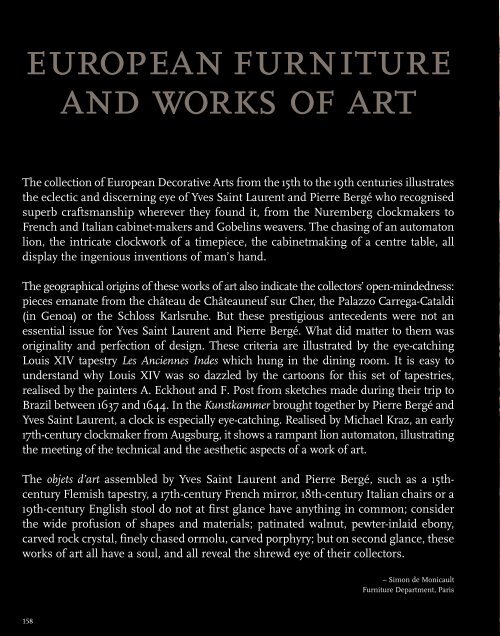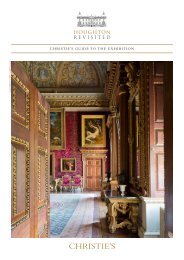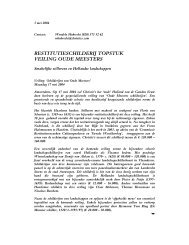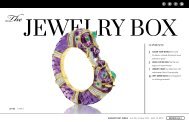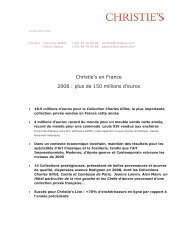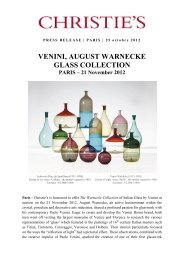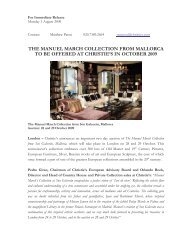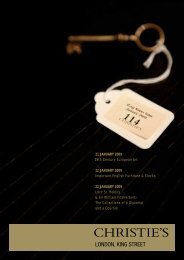Yves Saint Laurent Pierre Bergé - Christie's
Yves Saint Laurent Pierre Bergé - Christie's
Yves Saint Laurent Pierre Bergé - Christie's
Create successful ePaper yourself
Turn your PDF publications into a flip-book with our unique Google optimized e-Paper software.
european furniture<br />
and works of art<br />
The collection of European Decorative Arts from the 15th to the 19th centuries illustrates<br />
the eclectic and discerning eye of <strong>Yves</strong> <strong>Saint</strong> <strong>Laurent</strong> and <strong>Pierre</strong> <strong>Bergé</strong> who recognised<br />
superb craftsmanship wherever they found it, from the Nuremberg clockmakers to<br />
French and Italian cabinet-makers and Gobelins weavers. The chasing of an automaton<br />
lion, the intricate clockwork of a timepiece, the cabinetmaking of a centre table, all<br />
display the ingenious inventions of man’s hand.<br />
The geographical origins of these works of art also indicate the collectors’ open-mindedness:<br />
pieces emanate from the château de Châteauneuf sur Cher, the Palazzo Carrega-Cataldi<br />
(in Genoa) or the Schloss Karlsruhe. But these prestigious antecedents were not an<br />
essential issue for <strong>Yves</strong> <strong>Saint</strong> <strong>Laurent</strong> and <strong>Pierre</strong> <strong>Bergé</strong>. What did matter to them was<br />
originality and perfection of design. These criteria are illustrated by the eye-catching<br />
Louis XIV tapestry Les Anciennes Indes which hung in the dining room. It is easy to<br />
understand why Louis XIV was so dazzled by the cartoons for this set of tapestries,<br />
realised by the painters A. Eckhout and F. Post from sketches made during their trip to<br />
Brazil between 1637 and 1644. In the Kunstkammer brought together by <strong>Pierre</strong> <strong>Bergé</strong> and<br />
<strong>Yves</strong> <strong>Saint</strong> <strong>Laurent</strong>, a clock is especially eye-catching. Realised by Michael Kraz, an early<br />
17th-century clockmaker from Augsburg, it shows a rampant lion automaton, illustrating<br />
the meeting of the technical and the aesthetic aspects of a work of art.<br />
The objets d’art assembled by <strong>Yves</strong> <strong>Saint</strong> <strong>Laurent</strong> and <strong>Pierre</strong> <strong>Bergé</strong>, such as a 15thcentury<br />
Flemish tapestry, a 17th-century French mirror, 18th-century Italian chairs or a<br />
19th-century English stool do not at first glance have anything in common; consider<br />
the wide profusion of shapes and materials; patinated walnut, pewter-inlaid ebony,<br />
carved rock crystal, finely chased ormolu, carved porphyry; but on second glance, these<br />
works of art all have a soul, and all reveal the shrewd eye of their collectors.<br />
158<br />
– Simon de Monicault<br />
Furniture Department, Paris


